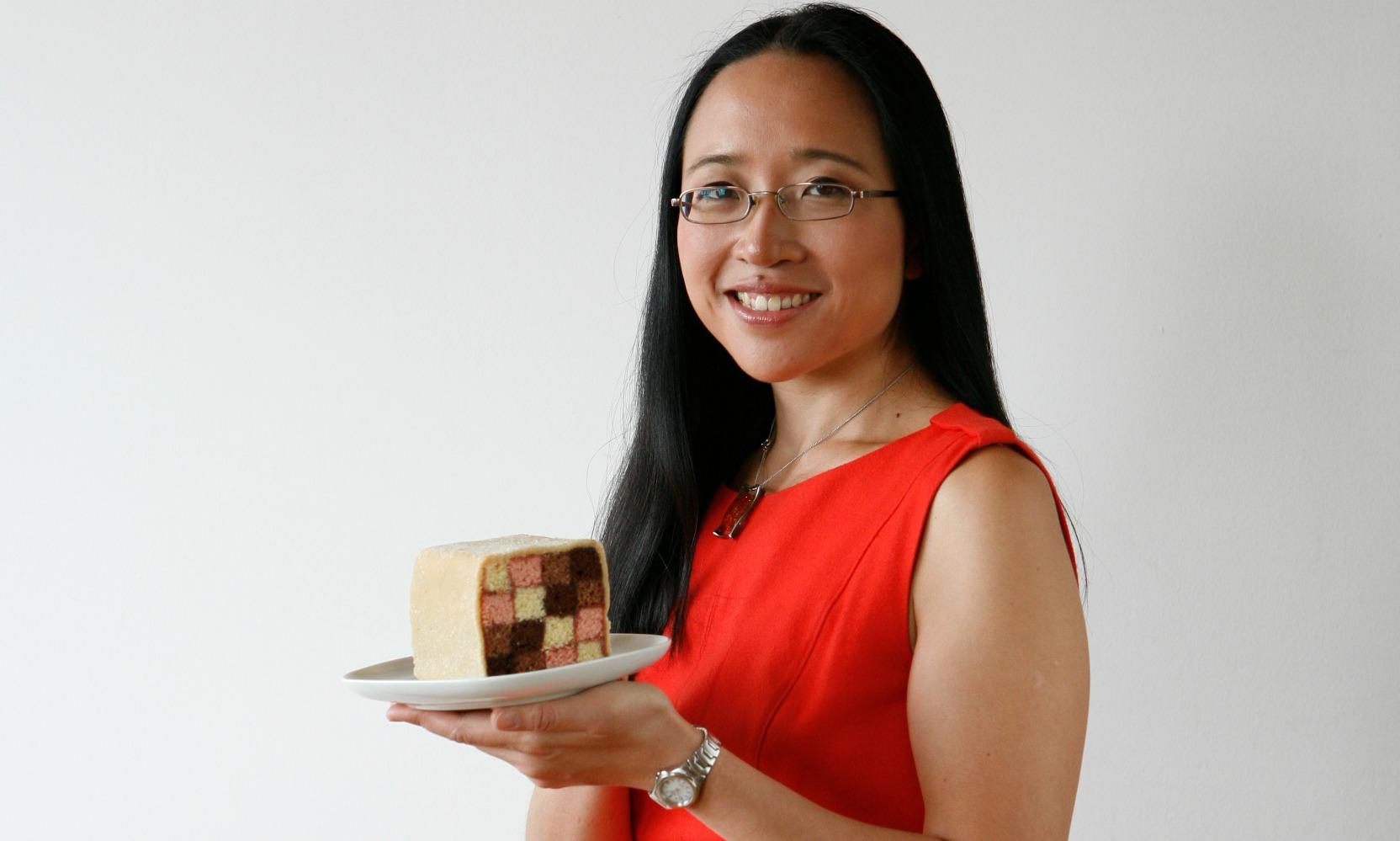Now We’re Cooking with Math
Nothing clears a dinner party faster than talking about math. But maybe what the subject needs is a friendly ambassador. Someone like Eugenia Cheng, who teaches math to artists studying at the School of the Art Institute of Chicago. She’s found the ideal vehicle for teaching math to people who don’t think it’s for them: baked goods. Her book is called “How to Bake Pi: An Edible Exploration of the Mathematics of Mathematics”The book is full of real recipes that Cheng uses to explain math concepts. She visited Kurt at his home to talk math and bake one of the recipes from the book, for chocolate lava cupcakes.
Kurt Andersen: How did you begin baking?
Eugenia Cheng: I started baking with my mother when I was very small, and I loved it because I love cake and cookies and all those dessert things. I think my mother learned to do it because my parents moved from Hong Kong to England, and they wanted to learn how to do all the very English things, and so they learned to bake. They don’t bake much in Hong Kong because it’s way too hot. You don’t want to turn the oven on.
I get the arithmetical connection between baking and math — like dividing measurements in half. But that barely seems like math to me.
That’s not the aspect of math I’m talking about when I’m talking about math and baking. It’s more the creativity of taking some basic ingredients and seeing all the things you can make with them. There are so many desserts you can make with basically the same ingredients. You just put them together in different ways. Math is like that —you take some basic ingredients and put them together in some fantastic ways. It’s about how you put things together and the way this magic happens where something comes out at the end that’s completely different from the things you put in.
When did you see the connection between these two things?
It started because I was teaching undergraduates, and if you’re learning something and you have no emotional connection to it, it’s hard to make it stick. When I compare it with food, it gives everyone a way of feeling an emotional connection with it. It sticks in people’s consciousness because they can go, “Oh, it’s that thing about Oreo cookies.”
What’s the mathematical concept that your chocolate cake illustrates?
It’s in a chapter about principles and why it’s good to understand the principles behind things rather than just memorizing a recipe. Because then if you find yourself with a bunch of merry mathematicians in the kitchen and you haven’t planned anything, you can just find stuff in your kitchen and invent something using the basic principles that you know. The principle of cakes is that if you start with an equal weight of every ingredient, it will come out about right.
That’s a general cake principle?
That’s a general principle of cakes, yes.
Conference Chocolate Cake
(from “How to Bake Pi: An Edible Exploration of the Mathematics of Mathematics”)
Ingredients
5 oz. butter, softened
5 oz. sugar
2 large eggs
5 oz. self-rising flour*
Cocoa powder to taste
About 7 squares of chocolate
* Do not use regular flour because there’s no baking soda in this recipe.
Method
1. Cream the butter and sugar.
2. Beat in the eggs, then fold in the flour.
3. Beat in the cocoa powder until the mixture looks dark brown.
4. Half-fill 14 small silicone muffin tins with the mixture, then put half a square of chocolate in, and cover with more of the mixture.
5. Bake at 350F for about 10 minutes. Eat immediately.
